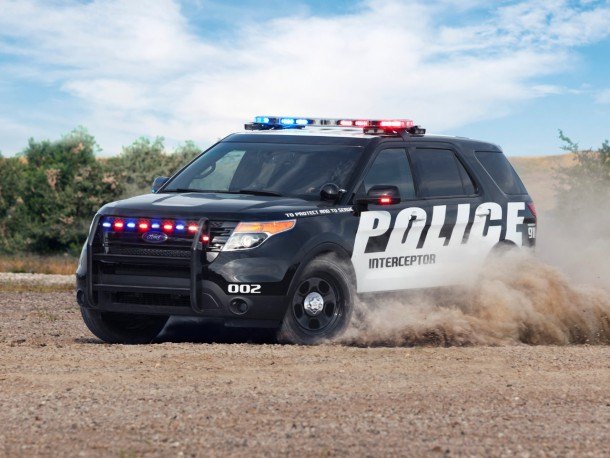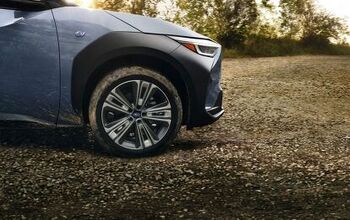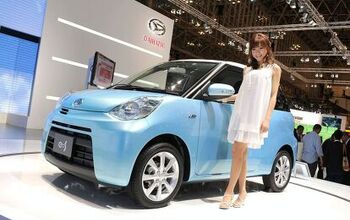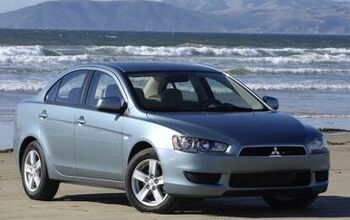Here Comes the Heat…

The sudden arrival of summer in this writer’s neck of the woods had two beneficial impacts. First, I’m able to work shirtless and, secondly, I can be assured that the harsh sun and 90-plus degree temps will scrub the rona from my car’s interior just by leaving it parked outside all day. Helps lower the Lysol budget.
Of course, summer can be all too brief, and sometimes a person doesn’t have all day to wait for ambient heat to melt the lipid outer layer of your average coronavirus. Ford has a solution that, while not great for the environment, will at least bring peace of mind to law enforcement officers.
It seems that, given the abundance of Blue Oval SUVs serving in police roles these days, the automaker felt the need to create a self-cleaning mode via the vehicle’s HVAC system and a new bit of software.
Yes, thanks to Ford, previous-generation Police Interceptor Utility models can really cook. On Wednesday, the manufacturer announced the creation of a new setting that cranks up the heat in the vehicle’s cabin to 133 degrees Fahrenheit for 15 minutes, eradicating 99 percent or more of viruses, even in hard-to-reach areas. It’ll also defrost those steaks.
Available “immediately” in 2013-2019 models sold in North America and overseas, the software can be activated even if the officer is in the vehicle, though you’d probably want to forgo that option in the interest of comfort.
From Ford:
Once activated, the vehicle’s powertrain and climate control systems work together automatically to elevate passenger compartment temperatures. The software warms up the engine to an elevated level, and both heat and fan settings operate on high. The software automatically monitors interior temperatures until the entire passenger compartment hits the optimal level, then that temperature is maintained for 15 minutes.
To research the effectiveness of this sanitization method, Ford worked closely with The Ohio State University to determine the temperature and time duration needed to help inactivate the COVID-19 virus.
After the 15 minutes is up, during which the vehicle locks its doors and turns on its flashers, the system vents the hot air and cranks the A/C, putting the vehicle back in business in a hurry. On 2016 and newer models, an officer can activate the system by pushing the cruise control buttons in a certain manner. Older models will require a technician plugging in to the vehicle’s diagnostics port to get the operation underway. This is a system you don’t want to be too easy to activate.
“You certainly don’t want it to be something that gets activated accidentally so it is a complicated enough cycle that you’d have to be paying attention to what you’re doing to, to get it to start,” Bill Gubing, Ford’s director of passenger vehicles and SUVs, told CNN.
Should the system activate with someone in the vehicle, any input from the occupant (such as moving the steering wheel) will shut the thing off.
Ford says large, well equipped police departments will be capable of installing the software themselves, while smaller outfits will need to tap a dealer service center. The system went on a trial shakedown cruise via several departments across the U.S. before its roll-out, though the automaker specifically mentions the New York City Police Department as asking for such a solution. The system can’t stop droplet ejection from an infected person’s mouth — and indeed this is the primary cause of coronavirus transmission — so the new self-cleaning system remains a nice-to-have, not a cure-all.
Ford claims it’s working on delivering the feature to other models.
[Images: Ford]

More by Steph Willems
Latest Car Reviews
Read moreLatest Product Reviews
Read moreRecent Comments
- W Conrad I'm not afraid of them, but they aren't needed for everyone or everywhere. Long haul and highway driving sure, but in the city, nope.
- Jalop1991 In a manner similar to PHEV being the correct answer, I declare RPVs to be the correct answer here.We're doing it with certain aircraft; why not with cars on the ground, using hardware and tools like Telsa's "FSD" or GM's "SuperCruise" as the base?Take the local Uber driver out of the car, and put him in a professional centralized environment from where he drives me around. The system and the individual car can have awareness as well as gates, but he's responsible for the driving.Put the tech into my car, and let me buy it as needed. I need someone else to drive me home; hit the button and voila, I've hired a driver for the moment. I don't want to drive 11 hours to my vacation spot; hire the remote pilot for that. When I get there, I have my car and he's still at his normal location, piloting cars for other people.The system would allow for driver rest period, like what's required for truckers, so I might end up with multiple people driving me to the coast. I don't care. And they don't have to be physically with me, therefore they can be way cheaper.Charge taxi-type per-mile rates. For long drives, offer per-trip rates. Offer subscriptions, including miles/hours. Whatever.(And for grins, dress the remote pilots all as Johnnie.)Start this out with big rigs. Take the trucker away from the long haul driving, and let him be there for emergencies and the short haul parts of the trip.And in a manner similar to PHEVs being discredited, I fully expect to be razzed for this brilliant idea (not unlike how Alan Kay wasn't recognized until many many years later for his Dynabook vision).
- B-BodyBuick84 Not afraid of AV's as I highly doubt they will ever be %100 viable for our roads. Stop-and-go downtown city or rush hour highway traffic? I can see that, but otherwise there's simply too many variables. Bad weather conditions, faded road lines or markings, reflective surfaces with glare, etc. There's also the issue of cultural norms. About a decade ago there was actually an online test called 'The Morality Machine' one could do online where you were in control of an AV and choose what action to take when a crash was inevitable. I think something like 2.5 million people across the world participated? For example, do you hit and most likely kill the elderly couple strolling across the crosswalk or crash the vehicle into a cement barrier and almost certainly cause the death of the vehicle occupants? What if it's a parent and child? In N. America 98% of people choose to hit the elderly couple and save themselves while in Asia, the exact opposite happened where 98% choose to hit the parent and child. Why? Cultural differences. Asia puts a lot of emphasis on respecting their elderly while N. America has a culture of 'save/ protect the children'. Are these AV's going to respect that culture? Is a VW Jetta or Buick Envision AV going to have different programming depending on whether it's sold in Canada or Taiwan? how's that going to effect legislation and legal battles when a crash inevitibly does happen? These are the true barriers to mass AV adoption, and in the 10 years since that test came out, there has been zero answers or progress on this matter. So no, I'm not afraid of AV's simply because with the exception of a few specific situations, most avenues are going to prove to be a dead-end for automakers.
- Mike Bradley Autonomous cars were developed in Silicon Valley. For new products there, the standard business plan is to put a barely-functioning product on the market right away and wait for the early-adopter customers to find the flaws. That's exactly what's happened. Detroit's plan is pretty much the opposite, but Detroit isn't developing this product. That's why dealers, for instance, haven't been trained in the cars.
- Dartman https://apnews.com/article/artificial-intelligence-fighter-jets-air-force-6a1100c96a73ca9b7f41cbd6a2753fdaAutonomous/Ai is here now. The question is implementation and acceptance.



































Comments
Join the conversation
Cool ~ now all they need is a system to clean up those little yellow things in the back of most patrol cars..... -Nate
Good to see some here are not crazy whackos.... -Nate